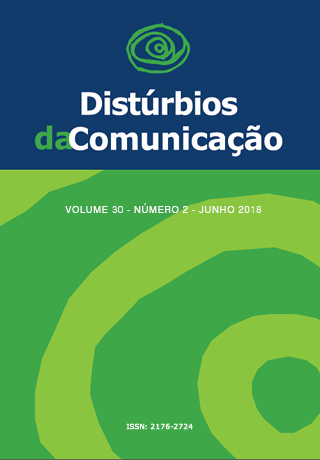Audiological evaluation in a child with microcephaly zika vírus: case study
DOI:
https://doi.org/10.23925/2176-2724.2018v30i2p-357-363Keywords:
Microcephaly, Zika Virus, Hearing lossAbstract
Introduction: Microcephaly is characterized by measuring the head circumference of an individual with two standard deviations below the population mean for sex and age. It is known that children with microcephaly are considered at high risk for hearing loss. Therefore, it is essential to evaluate and monitor the hearing until the third year of life. Within the battery of exams, there are currently new stimuli, such as Ichirp, that can be used in the Auditory Evoked Brain Stem Potential during the evaluation. Objective: To describe the audiological evaluation of a child with microcephaly by the Zika virus. Method: A battery of audiological exams was performed: meatoscopy, behavioural evaluation, imitanciometry and the Auditory Evoked Potential of Brain Stem, with the click and Ichirp stimuli. These tests were applied on a sevenmonth-old child diagnosed with microcephaly by the Zika virus. Results: The child presented audiological tests within the normal range, with the exception of visual reinforcement audiometry. Conclusion: The audiological evaluation was within the norms of normality. It should be monitored until the third year of life due to the risk of progressive loss. In the BAEP, better morphology and higher wave latencies were observed in the Ichirp stimulus when compared to the click.Downloads
Metrics
Downloads
Published
How to Cite
Issue
Section
License
Copyright (c) 2018 Bárbara Cristina da Silva Rosa, Jamylle Figueiredo Silva, Mirelles Santos, Dóris Ruthy Lewis

This work is licensed under a Creative Commons Attribution 4.0 International License.






